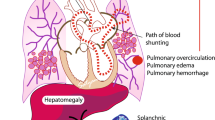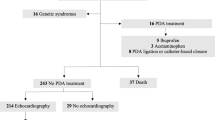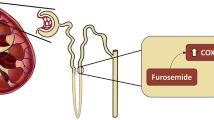Abstract
Patent ductus arteriosus (PDA) in preterm newborns prior to 28 weeks of gestation has led to many challenges regarding the type and timing of treatment regimens. A PDA results in increased pulmonary blood flow and redistribution of flow to other organs. Several co-morbidities (i.e., necrotizing enterocolitis, intracranial hemorrhage, pulmonary edema/hemorrhage, bronchopulmonary dysplasia, and retinopathy) are associated with the presence of a PDA, but whether or not a PDA is responsible for their development is still unclear. The prostaglandin inhibitor, indomethacin, is effective in the treatment of PDA. Questions regarding the optimal timing of the intervention – early prophylaxis or treatment, once signs and symptoms become evident – have challenged physicians for decades. Both evidence and experience are explored in this article. Comparative physiology between the full-term and preterm newborn and the barriers preventing the necessary cascade of events leading to permanent constriction of the PDA are reviewed.
This is a preview of subscription content, access via your institution
Access options
Subscribe to this journal
Receive 12 print issues and online access
$259.00 per year
only $21.58 per issue
Buy this article
- Purchase on Springer Link
- Instant access to full article PDF
Prices may be subject to local taxes which are calculated during checkout


Similar content being viewed by others
References
Clyman RI . Ibuprofen and patent ductus arteriosus. N Engl J Med 2000; 343: 728–739.
Hammerman C, Kaplan M . Comparative tolerability of pharmacological treatments for patent ductus arteriosus. Drug Safety 2001; 24: 537–551.
Clyman RI, Chan CY, Mauray F, Chen YQ, Cox W, Seidner SR et al. Permanent anatomic closure of the ductus arteriosus in newborn baboons: the roles of postnatal constriction, hypoxia and gestation. Pediatr Res 1999; 45: 19–29.
Hammerman C, Kaplan M . Patent ductus arteriosus in the premature neonate. Current concepts in pharmacological management. Paediatr Drugs 1999; 1: 81–92.
Waleh N, Seidner S, McCurnin D, Yoder B, Liu BM, Roman C et al. The role of monocyte-derived cells and inflammation in baboon ductus arteriosus remodeling. Pediatr Res 2005; 57: 254–262.
Levin M, McCurnin D, Seidner SR, Yoder B, Waleh N, Goldberg S et al. Postnatal constriction, ATP depletion, and cell death in the mature and immature ductus arteriosus. Am J Physiol Regul Integr Comp Physiol 2006; 290: R359–R364.
Clyman RI . Recommendations for the postnatal use of indomethacin: an analysis of four separate treatment strategies. J Pediatr 1996; 128: 601–607.
Fowlie PW, Davis PG . Prophylactic intravenous indomethacin for preventing mortality and morbidity in preterm infants (Review). Cochrane Collaboration Syst Rev 3 2005.
Schmidt B, Davis P, Moddemann D, Ohlsson A, Roberts RS, Saigal S et al. Trial of indomethacin prophylaxis in preterms. Long-term effects of indomethacin prophylaxis in extremely-low-birth-weight infants. N Engl J Med 2001; 344: 1966–1972.
Al Faleh K, Smyth JA, Roberts RS, Solimano A, Asztalos EV, Schmidt B et al. Prevention and 18 month outcome of serious pulmonary hemorrhage in extremely low birth weight infants. (abstract #2589) Pediatric Res 2004; 55: 456A.
Quinn D, Cooper B, Clyman RI . Factors associated with permanent closure of the ductus arteriosus: a role for prolonged indomethacin therapy. Pediatrics 2000; 110: e10.
Narayanan M, Cooper B, Weiss H, Clyman RI . Prophylactic indomethacin: factors determining permanent ductus arteriosus closure. J Pediatr 2000; 136: 330–337.
Author information
Authors and Affiliations
Corresponding author
Additional information
Disclosure: No significant relationship to disclose.
Rights and permissions
About this article
Cite this article
Hermes-DeSantis, E., Clyman, R. Patent ductus arteriosus: pathophysiology and management. J Perinatol 26 (Suppl 1), S14–S18 (2006). https://doi.org/10.1038/sj.jp.7211465
Published:
Issue Date:
DOI: https://doi.org/10.1038/sj.jp.7211465
Keywords
This article is cited by
-
Cardiovascular fetal-to-neonatal transition: an in silico model
Pediatric Research (2022)
-
Predictive Tool for Closure of Ductus Arteriosus with Pharmacologic or Surgical Treatment in Preterm Infants
Pediatric Cardiology (2022)
-
Ductus Arteriosus of Extremely Preterm Twins is More Resistant to Cyclooxygenase Inhibitors Than Those of Singletons
Pediatric Cardiology (2022)
-
Plasma B-type natriuretic peptide cannot predict treatment response to ibuprofen in preterm infants with patent ductus arteriosus
Scientific Reports (2020)
-
Duration of significant patent ductus arteriosus and bronchopulmonary dysplasia in extremely preterm infants
Journal of Perinatology (2019)



